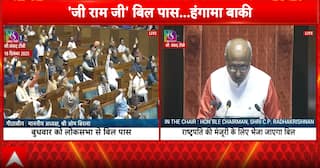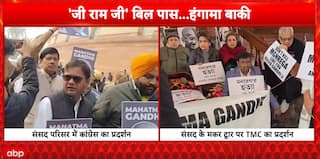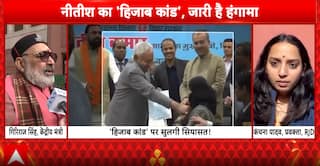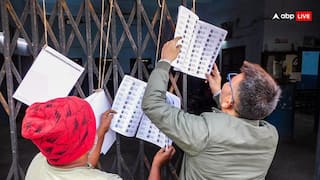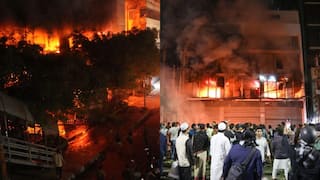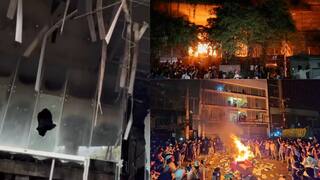Delhi's Air Quality Remains 'Poor' One Day Before Diwali, Plan Floated To Tackle Stubble Burning Woes
As the air quality deteriorates in Delhi every year around October, factors such as stubble burning and cracker bursting on Diwali are discussed along with unfavourable meteorological conditions.

New Delhi: Air quality in the national capital on Saturday remained in the poor category after it worsened at the 24-hour average AQI of 262 the previous day.
The weather office has predicted mainly clear skies on Saturday.
The Central Pollution Control Board's 24-hour average AQI bulletin on Friday stated that the index value was in the 'poor' category at 268. On Thursday, the index value was recorded at 228.
As the air quality deteriorates in Delhi every year with winter approaching, factors of stubble burning and cracker bursting on Diwali are widely discussed. Unfavourable meteorological factors such as low temperatures and wind speed, which do not allow the dispersion of pollutants, also contribute to the worsening of air quality in Delhi-NCR in October every year.
Delhi | A blanket of smog engulfs the national capital with the overall AQI (Air Quality Index) under the 'poor' category, at 262; visuals from India Gate & Kartavya Path pic.twitter.com/0zXCyiVC2E
— ANI (@ANI) October 22, 2022
Delhi's Plan To Reduce Pollution Due To Crackers & Stubble Burning
Delhi Environment Minister Gopal Rai on Saturday said that the Delhi Government has initiated a 15-point Winter Action Plan in order to reduce the dust pollution caused by stubble burning in the National Capital.
"A dust campaign is being run to stop the burning of stubble inside Delhi. Bio-de-composer is being used to stop the burning of firecrackers on Diwali in the same episode in Delhi," he said, as quoted by news agency ANI.
The Delhi Environment Minister further mentioned that as many as 51,000 diyas have been lit to give only one message that there can be such a beautiful Diwali too.
Notably, the sale or storage of firecrackers in the national capital can be punished with a fine of Rs 5,000 and/or imprisonment for three years.
Diwali Cracker Ban
The ban on firecrackers in the national capital continues as the Supreme Court on Thursday refused an urgent hearing of a plea seeking the removal of prohibition, saying "let the people of Delhi breathe clean air". The plea was filed by BJP MP Manoj Tiwari, reported news agency PTI.
A bench of Justices M R Shah and M M Sundresh refused to list the plea challenging the direction issued by the Delhi Pollution Control Committee (DPCC) on September 14 for a complete ban on manufacturing, storage, sale, and bursting of all kinds of firecrackers till January 1, 2023, in Delhi.
The bench told the counsel appearing for the BJP MP that instead of firecrackers, people should spend their money on sweets.
"Let the people of Delhi breathe clean air. People should not spend money on firecrackers instead they should eat sweets," the bench said, as quoted by PTI. It mentioned that plea will be coming up for hearing along with the main matter pending before the court.
Earlier in the day, noting the pendency of issues related to firecrackers before the Supreme Court, the Delhi High Court also refused to entertain a petition challenging the ban on sale and use of all kinds of firecrackers in the national capital.
The top court had last year clarified there is no blanket ban on the use of firecrackers and only those fireworks which contain barium salts are prohibited.
Stubble Burning Continues
Punjab Agriculture Minister Kuldeep Singh Dhaliwal said that 2,625 incidents of stubble burning were reported so far. "By this time in 2020, there were 7,115 stubble-burning incidents and in 2022, up till date, there have been only 2,625 stubble-burning incidents, which is very low in comparison. Incidents are decreasing day by day. We're creating awareness among farmers," Dhaliwal said, as quoted by ANI.
Last week he said, "We are constantly trying that the stubble should not be burnt at least in Punjab. All the officials have been told that there will be no FIR against the farmers. But we believe that the farmers will avoid stubble burning. We are also working in the direction to ensure stubble becomes an additional source of income for the farmers in the coming days."
As for Haryana, 134 cases of stubble burning were registered in Kaithal - the highest in the state. "A total fine of Rs 3.35 Lakhs was imposed on the farmers. FIR will now be registered against erring farmers," Sangeeta Tetarwal, Deputy Commissioner, Kaithal said on Friday, as quoted by ANI.
Visuals of stubble burning have continued to surface even as Punjab Chief Minister Bhagwant Mann held meetings with farmers to assure them of his government's efforts towards paddy straw management
Punjab | Stubble burning underway in the state; visuals from Tarn Taran district pic.twitter.com/FtmKna0GWO
— ANI (@ANI) October 21, 2022
CSE On Stubble Burning, Diwali Crackers' Contribution To Poor AQI
The Centre for Science and Environment (CSE) on Thursday said that concentrated stubble burning in Delhi's neighbouring states may compound the problem pertaining to air quality.
It mentioned that Diwali this year is being observed early in the season "which means the warmer and windier conditions will help dilute the pollution that is staple of Diwali night celebrations". Unlike the previous two years, the smoke from the farm stubble fires has not yet overwhelmed the air quality of the region and rains in early October have also kept the air relatively clean so far.
"Previous years' data shows that Diwali night can add 300-600 microgram per cubic metre of PM2.5 to Delhi's air if the business-as-usual scenario continues," it stated, as quoted by PTI.
Emissions from firecrackers and farm fires last year had pushed the capital's 24-hour average air quality index for the day after Diwali to 462, the highest in five years.
"PM2.5 concentration on Diwali night (8pm to 8am) last year stood at 747 microgram per cubic metre, 22 per cent higher than that on the 2020 Diwali night," the CSE said.
On stubble burning, the CSE noted that a prolonged spell of rains in early October delayed paddy harvesting in parts of Punjab and Haryana which could lead to a spike in stubble-burning incidents as farmers would be in a race against time to prepare their fields for the next crop.
ALSO READ | Will Anti-Smog Guns Help In Curbing Pollution In Delhi? Here's All You Need To Know
GRAP Stage 2 In Delhi
The Commission for Air Quality Management Wednesday ordered stage two of the Graded Response Action Plan (GRAP) to be enacted as "very poor" air quality was predicted in Delhi-NCR.
GRAP is a set of anti-air pollution measures followed in the national capital and its vicinity in view of the severity of the air quality situation. It is classified under four stages of adverse air quality in Delhi.
the use of coal and firewood in tandoors in hotels, restaurants, and open eateries is not allowed under stage two.
Use of diesel generators will also not be allowed except for essential services related to national security, defence-related activities, projects of national importance, telecommunication, data services, medical, railway and metro rail services, airports, inter-state bus terminals, sewage treatment plants, and water pumping stations.
The authorities also hike parking fees to discourage private transport and increase the frequency of bus and metro services.
Other measures usually taken under stage two include vacuum-based sweeping of roads every day, water sprinkling to prevent dust pollution, and strict implementation of dust control measures at construction and demolition sites.
Stage one pertains to 'poor' air quality (AQI 201-300); stage two to 'very poor' air quality (AQI 301-400); stage three to 'severe' air quality (AQI 401-450), and stage four is for 'severe plus' (AQI >450).
An AQI between zero and 50 is considered good, 51 and 100 satisfactory, 101 and 200 moderate, 201 and 300 poor, 301 and 400 very poor, and 401 and 500 severe.
(With Inputs From Agencies)











